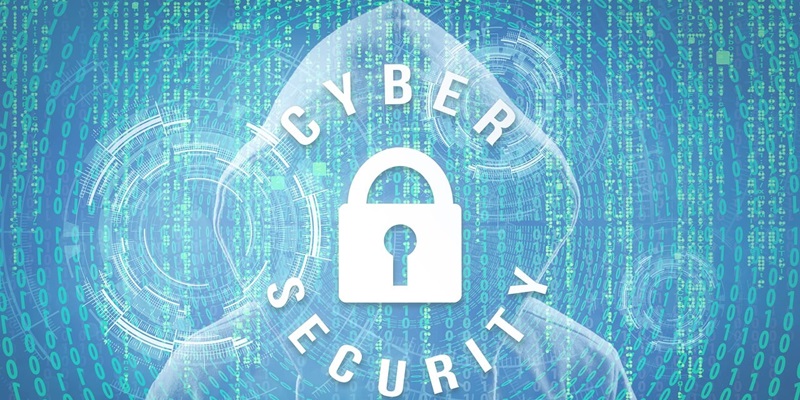As the digital landscape continues to evolve, the importance of cybersecurity measures cannot be overstated. With cyber threats becoming increasingly sophisticated, organizations need advanced technologies to safeguard their assets. In recent years, artificial intelligence (AI) has emerged as a powerful tool in the battle against cybercriminals. AI-powered systems have the ability to analyze vast amounts of data in real-time, enabling them to detect and respond to threats more effectively than human operators. This article explores the various ways in which AI enhances cybersecurity measures.
AI-powered systems for threat detection and response
One of the key advantages of AI-powered systems is their capacity to process and analyze vast datasets in real time. Unlike human operators, who may be limited by time constraints or fatigue, AI systems can tirelessly monitor and scrutinize network activities. By doing so, they can identify anomalies and potential threats with remarkable accuracy.
Moreover, AI systems have the ability to continuously learn and adapt to new threats. They can analyze patterns and behaviors that deviate from the norm, allowing them to detect malicious activities that would otherwise go unnoticed. This adaptive nature gives AI systems a significant advantage over traditional security measures.
Anomaly detection and behavior analysis
One of the primary ways in which AI enhances cybersecurity is through anomaly detection. By analyzing patterns and behaviors, AI-powered systems can identify deviations from the norm, which may indicate the presence of a cyber threat. These systems can quickly identify suspicious activities, such as unauthorized access attempts or unusual data transfers, helping organizations take prompt action to mitigate potential damage.
Additionally, AI systems can utilize machine learning algorithms to understand normal user behavior over time. By establishing baseline behavior patterns, AI can swiftly identify and flag any behaviors that deviate from the expected norm. This proactive approach enables organizations to stay ahead of cybercriminals and prevent potential breaches and attacks.
Vulnerability Identification
Another crucial aspect of cybersecurity is identifying vulnerabilities in a system that can be exploited by hackers. AI systems excel in this area by analyzing data from various sources, including network traffic, logs, and user behavior. By scrutinizing this data, AI can identify weaknesses or potential entry points that hackers could exploit.
Moreover, AI-powered vulnerability scanners can automate the process of identifying and patching vulnerabilities. These scanners continuously scan systems for weaknesses, ensuring that security patches and updates are applied promptly. This proactive approach minimizes the risk of cyber breaches and enhances overall cybersecurity posture.
Incident response and damage assessment
In the unfortunate event of a cyberattack or breach, AI-powered systems play a critical role in incident response and damage assessment. They can quickly analyze vast amounts of data to identify the source of the breach and the extent of the damage. By rapidly identifying the affected systems and compromised data, organizations can take immediate action to mitigate the impact of the attack.
Furthermore, AI can assist in developing an effective response strategy. By analyzing historical data and previous attack patterns, AI-powered systems can provide valuable insights and recommendations to security teams. This can significantly reduce downtime and the overall impact of the attack, helping organizations recover more efficiently.
Limitations of AI in cybersecurity
While AI-powered systems have proven to be highly effective in enhancing cybersecurity measures, it is important to acknowledge their limitations. One primary concern is the vulnerability of AI systems to adversarial attacks. Adversarial attacks involve intentionally manipulating the AI algorithms to make incorrect decisions, thus bypassing security measures. Organizations must remain vigilant and actively work to protect AI systems from such threats.
Ensuring Effective Cybersecurity Measures
To fully harness the power of AI in enhancing cybersecurity, organizations must have robust policies and procedures in place. These policies should include regular system updates, employee cybersecurity training, and strict access controls. Additionally, organizations must comply with relevant regulations to safeguard sensitive information and mitigate potential risks.
The role of AI in enhancing cybersecurity measures cannot be overstated. AI-powered systems have demonstrated their ability to analyze vast amounts of data, detect anomalies, and adapt to new threats with remarkable accuracy. By leveraging AI, organizations can enhance their overall cybersecurity posture, minimize the impact of cyber attacks, and reduce downtime. However, it is essential to remain aware of the limitations of AI and implement comprehensive security measures to protect against potential vulnerabilities. With a robust approach to cybersecurity, organizations can stay one step ahead of cybercriminals in today’s rapidly evolving digital landscape.

